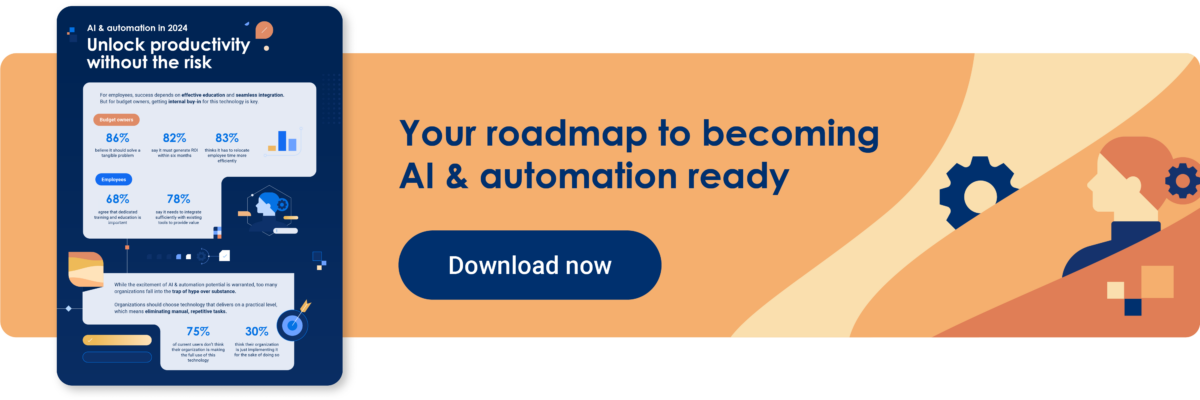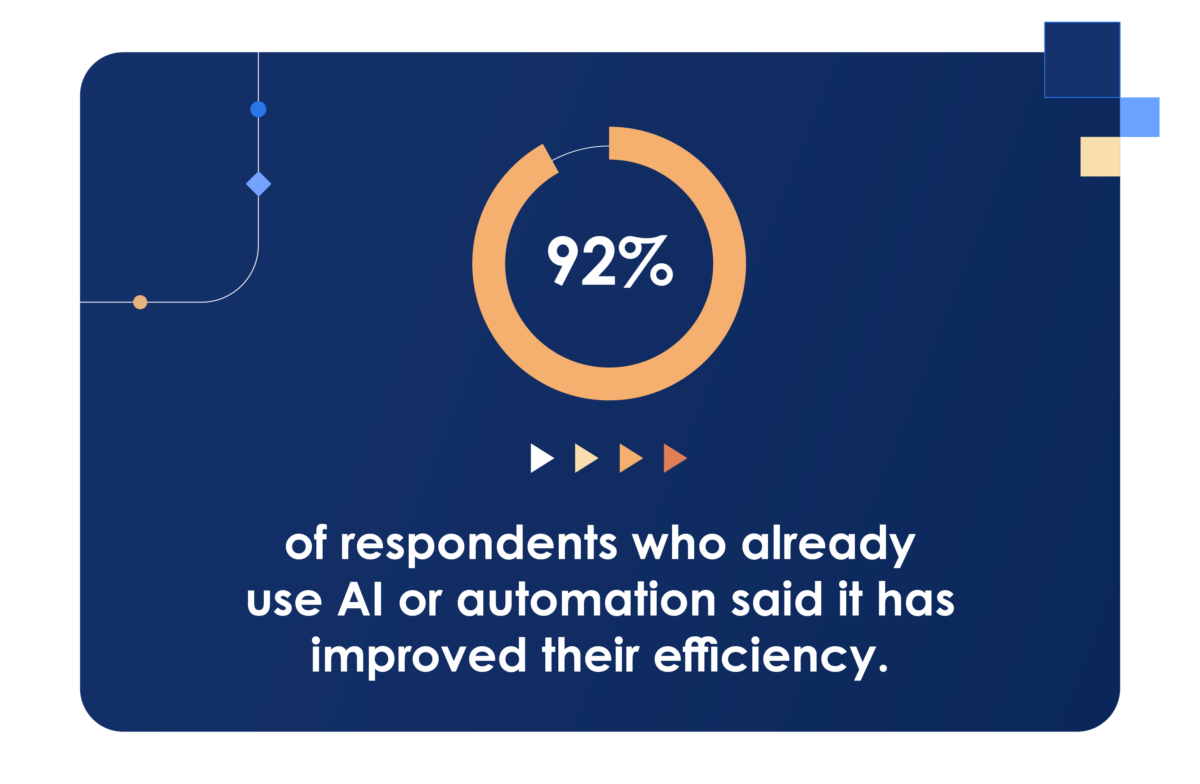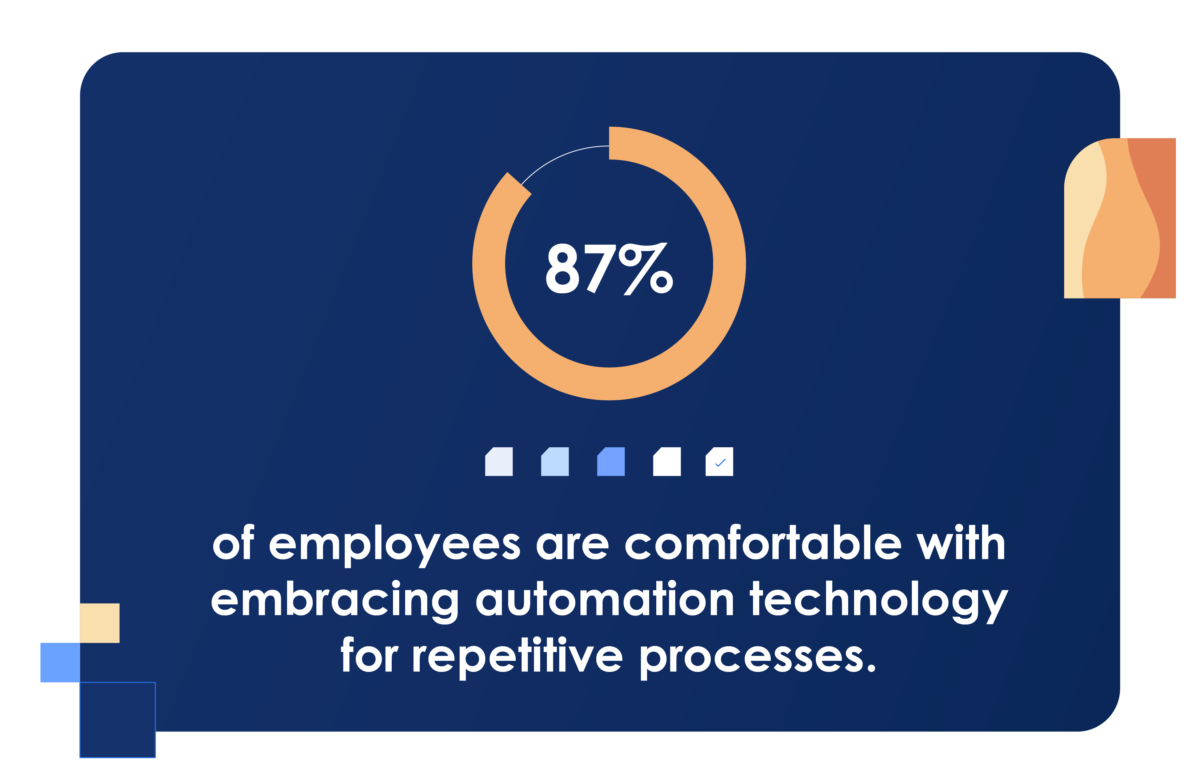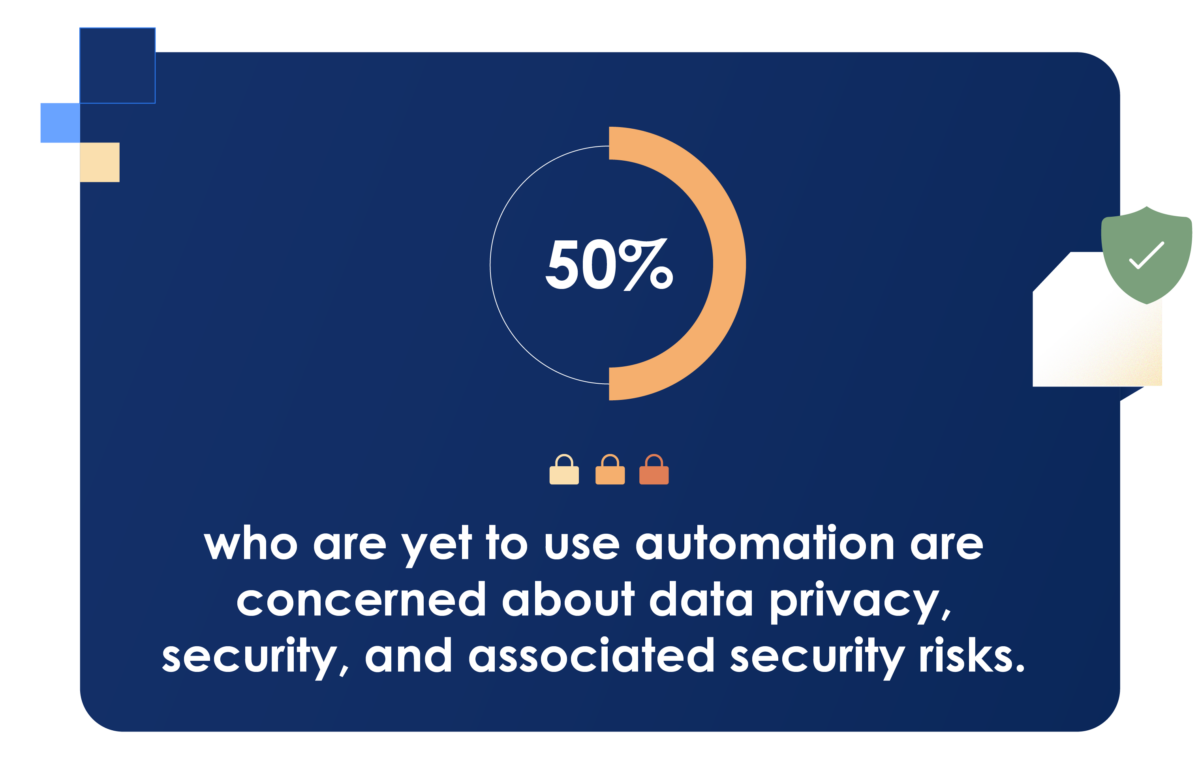72% of enterprise employees are now using AI or automation in the workplace. Templafy’s latest survey unveils how today’s workforce is reaping the productivity benefits of these technologies – and how your company can do so effectively and safely.
Throughout history, humans have feared the uprising of technology.
In the 1990s, the mass-introduction of ATMs triggered widespread panic that bank cashiers would become redundant. But, in an inspiring twist of fate, the number of bank cashiers increased every year since ATMs were introduced. In fact, liberating bank cashiers from their cash-handling duties empowered them to upskill into more complex – and higher paid – roles.
Fast forward to 2023, automation technologies - including AI - have the potential to revolutionize how today’s workforce handles manual, repetitive tasks, helping to accelerate productivity and eliminate risks.
But how do enterprises make sure that these capabilities provide more value than hype?
In this blog, we dive into the key takeaways from Templafy’s recent findings, to provide guidance on how to implement automation and AI effectively and safely.
We surveyed 1,209 enterprise employees from the UK and US on their use of AI & automation in the workplace.
For a step-by-step roadmap on how you can embrace AI & automation in 2024, download the infographic of our survey below.

What is the current AI & automation landscape?
It’s no longer just innovative market leaders who are adopting AI & automation technology.
Templafy’s survey revealed that 72% of enterprise employees are already using AI or automation in the workplace – and their workflow is skyrocketing because of it.
In fact, 92% of respondents who already use automation or AI said it has improved their efficiency.

Much like the internet, automation technologies are constantly evolving as we have seen this year with the emergence of ChatGPT and, whether we like it or not, they’re here to stay. For enterprises aspiring to maintain a competitive edge, embracing these technologies is not just an option – it’s a necessity.
But implementing technology for the sake of it is not the answer. Yet, 30% of employees believe their companies are doing just this, rather than having a clear view and approach on where it can provide actual value.
Understanding the best way to use these automation capabilities to accelerate productivity, mitigate risk and create positive outcomes for teams is going to be critical.
Eliminating manual, repetitive tasks
One of the most alluring aspects of AI & automation technology is its potential to eliminate repetitive, time-consuming tasks. In fact, 87% of enterprise employees said they were comfortable with their company embracing automation technology for repetitive processes.

When we think of what this could mean for document work in particular – a vital, but time-consuming part of many jobs – the benefits of automation are clear, but this lack of understanding is holding them back.
Of those who have access to automation technology:
72% of enterprise employees don’t believe their organization is making the fullest use of it, while 45% don’t think AI is being used properly within their company.
Organizations are rightly excited by the potential of AI & automation, but need to be confident that the output generated is high quality and trustworthy. This is especially true in this current era of AI.
Opting for a blend of rule-based automation and AI-generated content that they can manage and influence provides employees with the means to harness productivity advantages without the risk. This offers a huge step forward in the elimination of manual tasks like document work, meaning companies can create outputs with better accuracy and less liability, freeing up time to focus on the aspects of the job that matter.

AI & automation are boosting employee productivity
A recent study by McKinsey Global Institute concluded that the productivity benefits of Generative AI could lead to a $4.4 trillion increase to the global economy annually. So the potential for these technologies to boost revenue is clear.
According to Templafy’s study, 89% of employees who are already using AI or automation in the workplace say that it increased their productivity.
What’s more, UK respondents estimated that by leveraging document automation technology, they could save a staggering 32.5 working days per year. That’s annual leave covered.
When implemented strategically, organizations can expect to see increased operational productivity leading to cost savings and putting them in a stronger and more competitive position within the market.
A security-first approach to AI & automation
Despite the time-saving potential, Templafy’s findings indicate concerns that are holding enterprise employees back from fully embracing AI & automation. In fact, 50% of respondents who are yet to embrace automation technologies are concerned about data privacy, security, and associated security risks.

The implementation of AI & automation technology must be accompanied by robust security measures, to ensure that sensitive information is safeguarded. Addressing these valid concerns fosters a secure environment for seamless integration.
Templafy’s security-first approach ensures the strongest privacy and security standards, prioritizing compliance and accountability. Templafy was recently awarded ISO27001 accreditation, proving that we exceed the international standards for an information security management system (ISMS).
AI & automation technology should solve a tangible problem
Templafy’s findings show that by venturing into AI & automation with a clearly defined goal, for example saving time on data entry, enterprises can save time and money, while minimizing risk.
86% of respondents, of whom 50% had budget ownership, would be more likely to invest in an AI and/or automation solution if it addresses a tangible problem. This insight emphasizes the importance of aligning new technologies with strategic business goals.
So where should organizations who want to harness the power of AI & automation start?
Document automation
When looking at the challenges of day-to-day work that could be solved by the use of automation, respondents said that the following areas of workflow should benefit:
- Manual data entry (78%)
- Searching for information (56%)
- Creating documents (45%)
- Editing documents (42%)
As market leaders in document automation, Templafy is the ideal partner for global enterprises looking to axe repetitive and inefficient processes from their workflow.
Wherever you’re at in the automation revolution, our team is on hand to get you set up for success. If you’re curious to find out more about how Templafy’s services can support your enterprise, book a demo with one of our experts.





